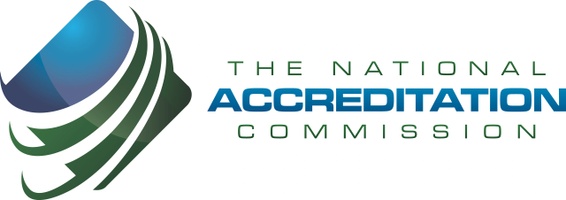Accreditation Standards

Accreditation Standards
Revised Standards as of 1.7.25
Standard 1. Mission, Leadership, and Planning
The program has measurable objectives and evidence-based strategies that align with the institution's mission, plans, and expected learning outcomes. Program leadership maintains an effective and evidence-based planning process for continuous improvement, which:
a. Documents and analyzes programmatic performance through quantifiable metrics
b. Sets specific, measurable targets for student achievement
c. Implements data-driven decision-making policies and procedures
d. Conducts regular assessments of outcome achievement
e. Continuously implements improvement strategies as a result of assessment and outcomes data
f. Incorporates assessment data into planning and budgeting to allocate resources effectively, targeting areas that enhance student learning
Standard 2. Program Design and Delivery
The program design and instructional materials are contemporary, educationally sound, and directly linked to measurable learning outcomes. The program:
a. Utilizes effective instructional methodologies validated through learning analytics
b. Implements an innovative framework to deliver technical and durable skills that cultivate curiosity, resilience, and purpose
c. Regularly assesses and documents the effectiveness of teaching methodologies through student learning performance data
d. Ensures the availability and effectiveness of resources through utilization metrics and impact assessment
e. Maintains physical facilities, technological tools, informational assets, and support services with documented adequacy for meeting student needs
f. Regularly evaluates resource effectiveness using user satisfaction surveys and a variety of direct and indirect data-gathering methods
Standard 3. Faculty, Instructors, and Staff
Faculty, instructors, and staff must demonstrate:
a. Appropriate credentials (degrees, certificates, or licenses) in their teaching field/discipline
b. Relevant professional experience in the course/program
c. Effective teaching skills, validated through student learning outcomes and structured evaluations by peers, management, and students
d. Annual participation in professional development activities that demonstrate a measurable impact on teaching effectiveness
e. Documented improvements in student achievement linked to faculty development activities
f. Meeting or exceeding established performance metrics for teaching effectiveness
Standard 4. Recruiting, Admissions, and Enrollment
The program operates with transparency and efficiency in recruiting, admitting, and enrolling students by:
a. Maintaining compliance with state and federal laws with documented evidence
b. Ensuring transparent admissions and recruitment policies that are openly shared with the public in accessible formats
c. Ensuring the accuracy of promotional materials through regular audits
d. Tracking and analyzing student success rates by admission cohort
e. Documenting the effectiveness of support services through the use and evaluation of outcome measures
f. Regularly assessing the alignment between student needs and program delivery
g. Measuring and reporting on student satisfaction and success metrics
h. Tracking student retention and completion rates while implementing targeted strategies to enhance both
Standard 5. Learning Recognition and Student Services
The program demonstrates effectiveness in:
a. Creating measurable pathways for credit transfer and the recognition of educational achievement
b. Tracking success rates of transfer students and advancement into degree programs
c. Documenting the impact of support services on student outcomes
d. Measuring the effectiveness of career, personal, and academic support through outcome data
e. Regular assessment and improvement of service delivery based on student success metrics
f. Analyzing and documenting the relationship between support services and student achievement
Standard 6. Administrative and Fiscal Capability
The program maintains:
a. Clear and effective administrative processes with documented outcomes
b. Fiscal capabilities validated through regular audits and assessments
c. Operational policies and procedures with measurable effectiveness
d. Complaint and grievance resolution processes with documented steps and resolutions
e. Regular evaluation of administrative effectiveness through stakeholder feedback
f. Performance metrics for operational efficiency and effectiveness
Standard 7. Student Achievement and Outcomes Assessment
The program implements a comprehensive outcomes assessment system that:
a. Documents, tracks, and analyzes completion rates with demographic breakdowns
b. Effectively and consistently utilizes well-constructed rubrics and competency measures
c. Balances direct and indirect measures of assessment
d. Measures credential attainment rates against established benchmarks
e. Tracks certification and licensure pass rates with state and national comparative analysis
f. Monitors job placement and labor market outcomes, including employment rates and earnings
g. Conducts regular alumni surveys to assess career success
h. Conducts regular employer surveys to assess satisfaction with program graduates and training
i. Implements continuous improvement based on outcomes data
j. Reports disaggregated data on student achievement across all demographic groups
k. Maintains key performance indicators with trend analysis
l. Documents the effectiveness of improvement initiatives through outcomes data
m. Regularly assesses and updates outcome measures based on industry needs

Call for Comment
As part of NAC's efforts to pursue recognition with the Secretary of Education and to ensure ongoing efforts to make the accreditation process responsive to various constituents, NAC invites written and oral third-party comments on its standards of accreditation, which are posted to the left.
NAC welcomes comments from interested individuals from the community, students, graduates, and the public.
Constituents can submit written third-party comments directly to the President via email Rebecca@NationalAccreditation.org or provide anonymous comments in the comment form on the Contact page.
NAC will share written third-party comments with its board and staff and use the comments to improve its accreditation standards, policies, practices, and procedures.
Original Date of Call for Comment: 1.18.24
Updated Standards Posted: 2.23.24
Subsequent Dates of Call for Comment: 2.23.24
Updated Standards Posted 7.10.24
Subsequent Dates of Call for Comment: 7.10.24
Updated Standards Posted 1.7.25
This website uses cookies.
We use cookies to analyze website traffic and optimize your website experience. By accepting our use of cookies, your data will be aggregated with all other user data.

